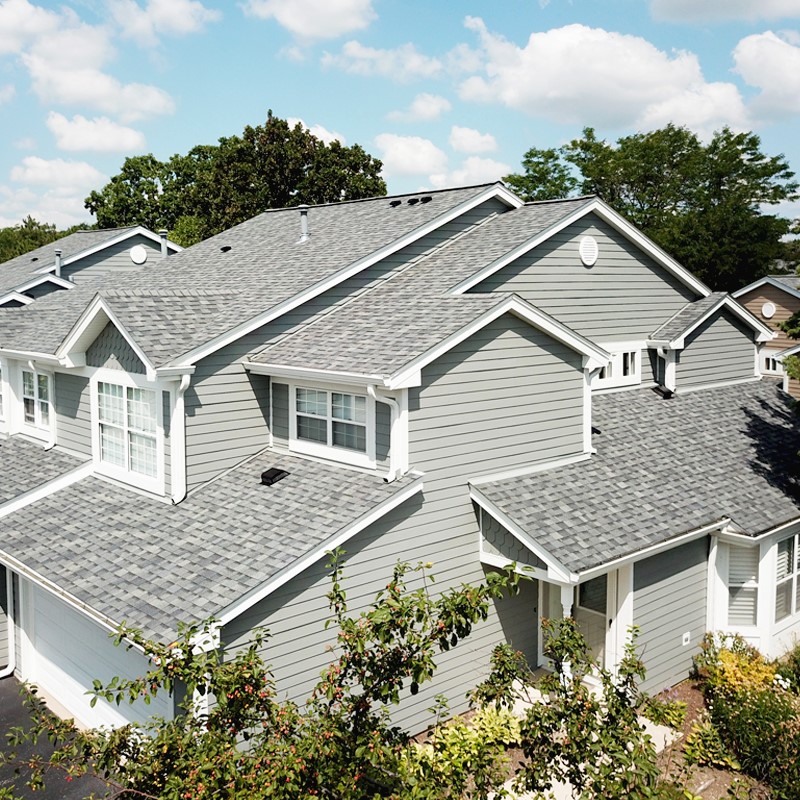
An inspection and cleaning of your roof will go a long way to prevent any issues, plus a well-maintained roof will extend its life and value of your home. We recommend checking your roof, especially during spring and autumn seasons. The most tedious task involved in roof cleaning is removal of debris from rain gutters, which allow flow rainwater to flow through the drainage system and prevent water damage to the exterior and interior of your home.
Here are a few things to remember:
Debris, Leaves, and Pine Needles
These collect over time and will hold and trap moisture and anything that holds moisture will cause blockage, add extra weight and cause growth of mold. This includes the roof and gutters drainage system. The roof’s valleys and slopes are designed to direct rainwater from the roof to the gutters. When debris gathers on the rooftop, the entire roofing system becomes affected. Use a broom, gloves or other light tools to clear the congested roof area and gutters.
Tree Branches
If tree limbs touch a roof, they can easily damage it by scraping over it causing the shingles and protective granules on shingles to loosen. Overtime, this will cause serious damage and require roof replacement even sooner than expected. Cut tree limbs back at least 2 feet from your house to keep them far from rain gutters and roof. Or, when in doubt contact your landscaper or arborist for expert opinion.
Mold, Algae, and Fungus
If there are discolored streaks visible on the roof this may be the first indication of mold. Mold is a type of fungi and is fuzzy in appearance and may carry different colors. Mold can damage roofing by eating away at the roofing material resulting in leaks. Moss thrives in a damp and shady environment and usually grows on the north side of the roof where there is less sun exposure. Overtime, it can cause roofing to degrade. Most roofs can be gently cleaned with a biodegradable cleaner which discourages moss growth and helps extend the life of asphalt shingles. Installing copper or zinc flashing can help reduce moss and algae growth. Mold and algae stains are common roofing problems in Illinois.
Gutters, Downspouts, Fascia, and Soffit
Debris, such as leftover fall leaves, spring pollen, broken tree branches, heavy winter snow all contribute and can lead to clogged gutters and downspouts. Damaged soffit and fascia can be an ideal place for water to collect and cause mold growth and deterioration. Loose or broken gutters and downspouts need to be repaired so that they do not misdirect rainwater and cause damage to your home. Check that water can easily flow through the gutters and downspouts and repair and loose nails or dislodging. Check for damaged or rotted fascia, soffit boards, drywall and framing. Also, check for nests and rodents nestling underneath the roof overhang.
Missing Roof Shingles, Chimney, and Flashing
Missing metal pieces, displaced pieces around chimney and exhaust pipes, valleys, outer edges, damage, breakage, cracks, dents, etc. If left neglected, it can become a costly repair and/or replacement expense.
Modern roofing materials are available and since have been vastly improved and offer durability, weather resistance and longer life, and low maintenance. Many are resistant to mold, mildew, moss and algae. Be sure to inquire about maintenance and durability of your roofing materials whenever you choose a new or replacement roof.
Please remember, that roof work is dangerous and doing the work yourself requires climbing, keeping balance, having the right safety equipment and tools and knowing how not to damage your roof. The best solution to roof care and maintenance is to partner with a professional roofing service and one which offers regular maintenance programs to help you protect your investment.
Consider us for the job and have peace of mind. If you want to learn more about our replacement services, get in contact with our office. Call us today, or fill out our online form to request a free in-home consultation.
Tags
Subscribe to Pro Home 1's Blog








Comments